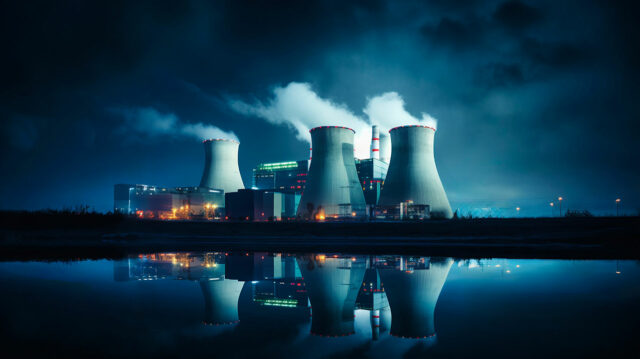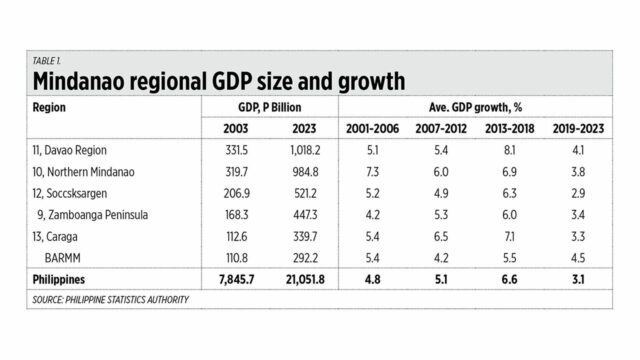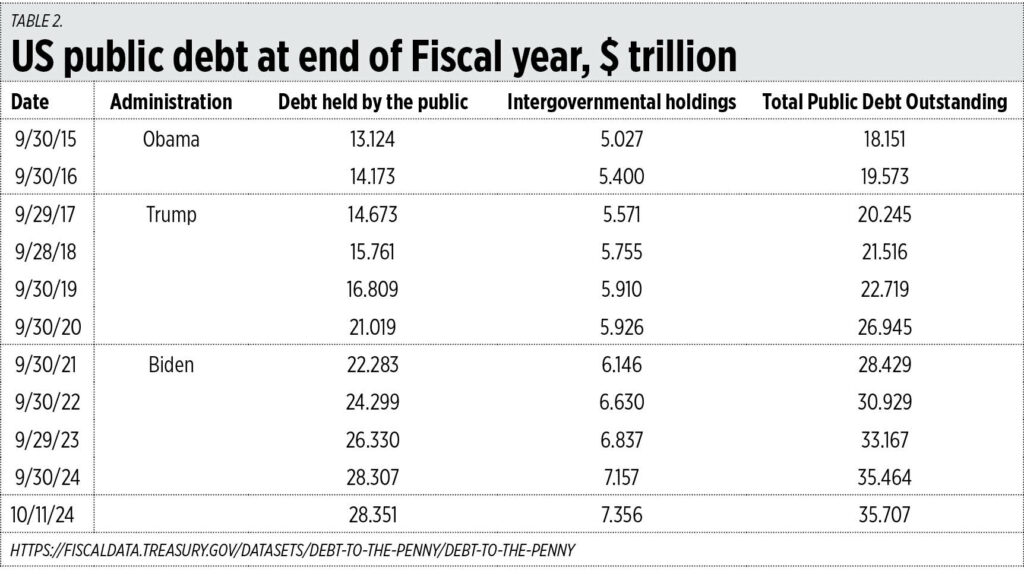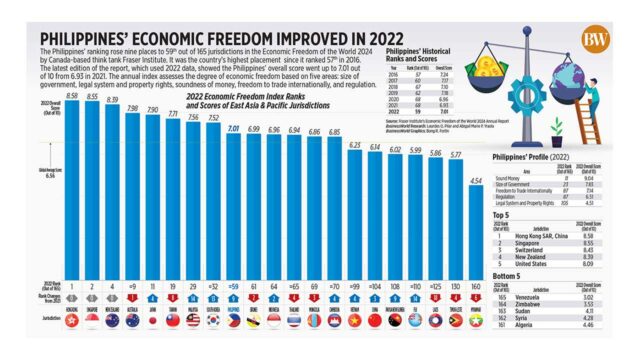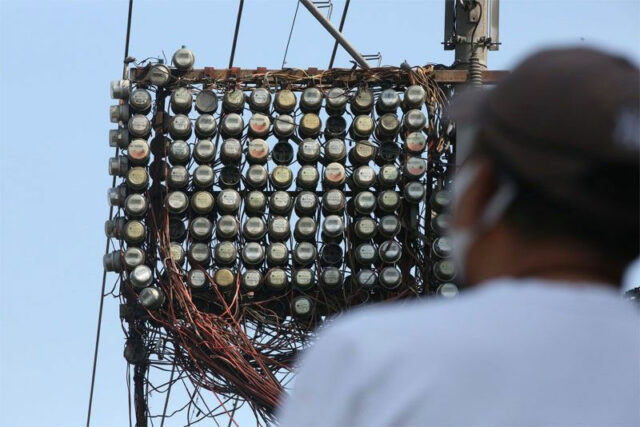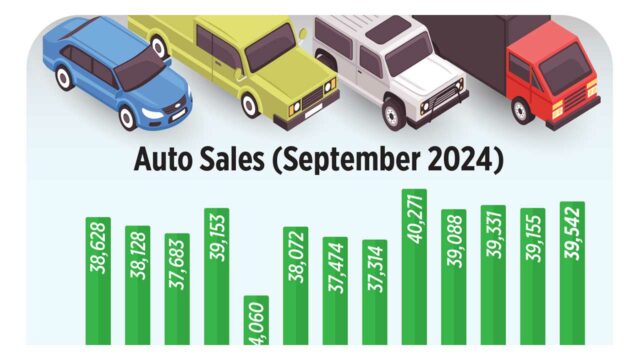As AI booms, techs turn to nuclear
Tech giant Google is reportedly contracting several small nuclear power plants to secure a steady supply of electricity for its data centers by 2030. This move reflects the company’s growing demand for energy, particularly with the rise of artificial intelligence (AI). At the same time, Google sees nuclear power as a low-carbon solution to meet its energy needs sustainably.
According to an article in The Guardian by Alex Lawson, Google has signed a deal to buy electricity from six or seven small modular reactors (SMRs) to be built by California-based Kairos Power. The first SMR is expected to be operational within six years, with the rest coming online by 2035. This shift to nuclear aligns with Google’s forecast of a significant increase in energy consumption as AI-driven services expand.
Alphabet, Google’s parent company, described this nuclear initiative as a way to secure a “clean, round-the-clock power source that can help us reliably meet electricity demands.” Nuclear energy is said to offer a reliable and low-carbon solution, which aligns with Google’s sustainability goals and supports the continuous operation of energy-intensive data centers.
Google is not the only tech company betting on nuclear power. In March, Amazon purchased a data center in Pennsylvania powered by nuclear energy. Following suit, Microsoft signed a deal in September with a nuclear power facility located on Three Mile Island, also in Pennsylvania. The Guardian attributed these developments to the explosive growth of AI and cloud computing, which have drastically increased energy needs.
These tech companies are preparing for future energy demands even before consumption peaks, recognizing that energy infrastructure takes time to build. As technology evolves and becomes more integrated into every aspect of life, more nuclear power plants may be contracted to support high-tech operations. This trend indicates that the tech industry views nuclear energy as essential for achieving energy security in the era of AI.
Microsoft’s deal involves the revival of a reactor at the infamous Three Mile Island site, where a meltdown in 1979 marked the worst nuclear accident in US history. Although the accident caused no immediate deaths, it severely damaged public confidence in nuclear energy. After the incident, Unit 2 at the facility was decommissioned. Unit 1, however, continued operating until 2019, when it was shut down for economic reasons.
The plant’s recent revival reflects the changing landscape of energy demand. With a 20-year power purchase agreement secured with Microsoft, the plant’s operator, Constellation Energy, decided to restart Unit 1. This recommissioning marks the first time a nuclear reactor in the US has resumed operation after closure.
The Guardian reported that the reactivated plant would generate an additional 835 megawatts for Pennsylvania’s grid, create 3,400 jobs, and contribute at least $16 billion to the state economy. Constellation emphasized that the plant had been one of the safest and most reliable before its previous shutdown.
Despite the plant’s troubled history, Microsoft’s long-term commitment signals a level of confidence in the safety and reliability of the site. In preparation for the restart, the reactor will undergo a comprehensive safety and environmental review by the US Nuclear Regulatory Commission. Additionally, Constellation plans to apply for licenses that could extend the plant’s operations until at least 2054.
The revival of nuclear energy, particularly among tech giants, is not without controversy. While nuclear offers a reliable and low-emission energy source, it poses environmental and safety risks. Nuclear plants depend on water sources for cooling, making them vulnerable to climate-related disasters like droughts, floods, or hurricanes. Earthquakes and other unforeseen events could also trigger accidents, as seen in past incidents like Chernobyl (1986) and Fukushima (2011).
Nevertheless, tech companies appear willing to take these risks, likely driven by the surge in energy demand from AI. According to Goldman Sachs, The Guardian reported, AI-related energy consumption could grow by 160% by 2030, with data centers projected to use about 8% of US electricity by that time. With such rapid growth, stable and scalable power sources like nuclear become essential.
Michael Terrell, Google’s senior director for energy and climate, was quoted by The Guardian as saying: “The grid needs new electricity sources to support AI technologies that are powering major scientific advances, improving services for businesses and customers, and driving national competitiveness and economic growth.”
Interestingly, the Philippines is also exploring nuclear energy as part of its energy strategy. Recently, Manila Electric Co. (Meralco) partnered with South Korea’s Samsung C&T Corp. Engineering & Construction Group to assess the potential of nuclear power. Their discussions cover both large-scale nuclear plants and smaller modular reactors, similar to what tech giants in the US are pursuing.
The government has expressed interest in integrating nuclear energy into the country’s power mix, aiming to have operational plants by 2032. There is even renewed interest in reviving the Bataan Nuclear Power Plant, a facility that was built but never activated due to political and safety concerns in the 1980s.
At the heart of this nuclear shift is the goal of energy security —ensuring an uninterrupted, sustainable, and efficient energy supply. As AI reshapes industries and consumer behavior, electricity becomes as essential as food and water. Both businesses and households now rely heavily on power for daily operations, making energy availability a critical issue.
Although I have reservations about operating nuclear plants locally, the rising demand for energy cannot be ignored. With proper regulation, modern safety protocols, and strategic investments, nuclear power might become a viable solution for the Philippines. However, the decision to adopt nuclear energy must weigh the potential benefits against the risks and explore how it can complement renewable energy sources.
The shift of tech giants like Google, Amazon, and Microsoft toward nuclear energy highlights the growing pressure to secure reliable power sources for a future driven by AI and cloud technologies. While nuclear energy offers a low-carbon solution to energy-intensive operations, it also comes with significant risks. The decision to embrace nuclear power, whether in the US or the Philippines, will require careful planning, stringent regulation, and public engagement.
Ultimately, achieving energy security in a world increasingly reliant on technology will depend on finding the right balance between safety, sustainability, and economic growth. As companies and governments explore their options, nuclear energy might well play a pivotal role — whether we are ready for it or not.
Marvin Tort is a former managing editor of BusinessWorld, and a former chairman of the Philippine Press Council

